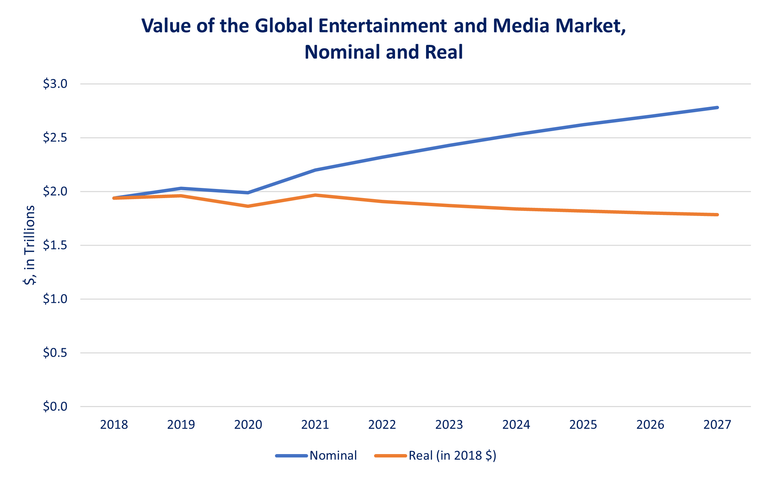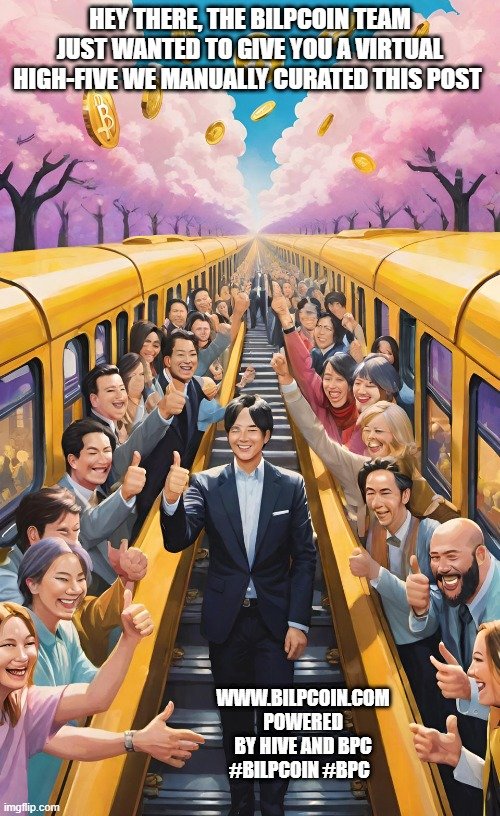The shift in media is happening at a fast pace. This is something that many have observed. However, there is real monetary value in what is taking place.
Legacy media is dying. For the moment, they are still strong in the sense they account for the majority of the revenue generated. Contrent creators are making progress yet still have a wide gap.
This is going to change. The trend is clear, meaning that we could see accleration over the next half decade. If we see the emergence of Web 3.0, this could usher in the total destruction of the traditional media business.
In this article we will look at the economics behind this industry.

Content Creators Versus Traditional Media: A Monetary Look
How much is the traditional media realm worth?
The revenues generated from what is termed "media and entertainment" is roughly $2.5 trillion. Hence we are dealing with a fair chunk of money at risk.
According to Doug Shaprio, the content creator economy is about 10% of that total, pulling in $250 billion each year.
More importantly is the trend that is established and how it will play out over through the rest of the decade:
Based on a bottoms-up analysis of the largest creator media outlets, I estimate that the Creator media economy generated close to $250 billion in revenue last year, roughly 10% of the global M&E market. It is growing far faster and over the last four years accounted for almost half of global M&E growth. Conservatively, I estimate it will exceed $600 billion and 20% of global M&E revenue by 2030.
His view is the revenue generation for content creators will double in relation to the traditional business, accounting for 20% of the total. This is means would could see another $350 billion generated from individual content creators.
Of course, generated and paid out are two different things. In many instances, the platform keeps a significant portion of the money. Google does not pay out on every YouTube video. Even when it does, there is only a percentage that goes to the channel. Google gets its piece.
This does not negate the fact the revenue was generated. It is also a threat to tradional media.
The key to all this is the bottom up approach.
Massive Content Generation
We discuss AI a great deal. However, even if we overlook this, the amount of content from the creator realm is going to far outpace that of the legacy media. The numbers simply work in the favor of the new system.
To provide a frame of reference, if .1% of the YouTube videos uploaded each day were of quality, that would surpassed the annual output of television and movies in two days.
As we can see, the numbers are simply mindblowing.
Of course, we cannot overlook AI. This is going to close the gap in content generation. It also should accelerate the output.
This is going to close the gap. Here are a number of reasons that will keep feeding this:
- Even absent GenAI, the volume of creator content should grow much faster than corporate media as creation gets ever more accessible;
- The quality distinction between corporate media content and the best creator content will continue to narrow;
- Falling trust in institutions and rising demand for authenticity structurally favor creators;
- Monoculture is in decline as consumers atomize into microcultures, disadvantaging the traditional media business model;
- Demographics are destiny, and younger demos spend much more time with creator content; and
- The current monetization gap for the creator media economy (the delta between time share and dollar share) should narrow over time.
This is supported by demographics. The younger generations are not tuning into traditonal media. Instead, they spend time on TikTok, YouTube, and other applications.
The Web 3.0 Opportunity: Data
Here we go again. Somehow we come back to the same topic: data.
I want to highlight number 2 on the list above. This is something that is crucial:
tokens are becoming an atomic unit for the creation of information goods;
A token is a unit of data. This means the creation of information goods is quantified by the number of tokens generated each day. It is why the databases of Meta, Google, and X are vital. They are being added to daily, with millions (billions) of users posting.
Again, much of this is not very valuable but the overall impact is enormous.
Web 3.0 has to understand these components. Doug Shapiro is spent his career in media. This is not a guy who is a crypto advocate. He does, however, understand the changing landscape.
Web 3.0 alters the incentivization structure. It is here where we can see the payouts altered. Instead of the value being driven to Google or Meta, which only helps the shareholders, we see a methodology to push this towards the creators.
Of course, this becomes more than just an income source. Because many tokens are value capture, it actually is providing content creators with an equity stake. This is something that is rare even in the legacy media. Perhaps there are royalites, which can be viewed as equity in a certian project such as a film. However, the overall value of the network (or company) is not enjoyed by the on-air personnel unless they happen to own stock.
For online content creators, even an income is tough.
Web 3.0 changes this. Anyone with a token has a stake in the platform (or network). This means the increase in value is enjoyed by each token holder. It is an added layer of incentive.
To me, we are also looking at something that is not accounted for by those looking at the industry.
With an equity stake, there is much greater incentive to create more content. When we start the process of adding in shorts, AI, gaming, and subscription platforms, we can see how the idea can penetrate many different facets of the content creation world.
Not only are we dealing with tokens paid out, we also have to focus upon tokens generated.
Posted Using InLeo Alpha
